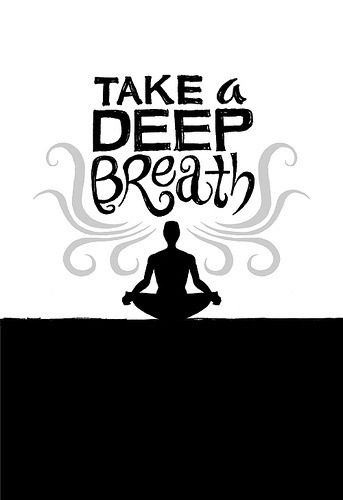Relaxed diaphragmatic breathing allows you to take new energy in and release tension and stress.  Easy to learn in private sessions or take my upcoming workshop at South Bay Yoga Conference.
Easy to learn in private sessions or take my upcoming workshop at South Bay Yoga Conference.
Tag Archives: relaxation
mid day bliss
a nap is a great way to relax and reboot
relax!!!!
all you really need is practice 
peace transforms
Yoga Festival Montreal
Hey Montrealers! Have you checked out the Yoga Festival Montréal : May 31-June 2!
Hope to see you at my Breathe With Purpose Workshop
Check it out: www.yocomo.org 
Sunday yoga
 Yoga based relaxation is for anyone, any time, any place
Yoga based relaxation is for anyone, any time, any place
clarity
yogi bear
7 Reminders To Keep Your Yoga Practice Pure
7 Reminders To Keep Your Yoga Practice Pure
Featured on MindBodyGreen By Rana Waxman
Around this time of year, you seem to begin to hear more about “spring detoxes,” “spring cleaning,” and, “cleansing.” Even non-yogis are hailing kale and dropping the “cleanse” buzzword. So what does it all mean? Where does the special focus come from and why this time of year?
Cleanliness, or purity, is an ongoing part of the yoga system. Patanjali calls our attention to it in sutra 11.40: “Purity protects one’s body and brings nonphysical relationships with others.” According to T.K.V. Desicachar, the word tapas in the yogic system means, “Something we do in order to keep us physically and mentally healthy; a process of inner cleansing. We remove things we do not need.”
For those of us who had a cold winter, spring is when Mother Nature’s sunny smile makes things defrost and blossom; the maple syrup runs, we shed boots, scarves, hats and sweaters. We reorganize our closets to find our lighter clothing. We often have runny noses, allergies are irritated with all the pollen in the air, and the body tries to decongest itself of excess mucous.
Some students and friends have been telling me they’re exhausted, their joints hurt, and they’re feeling completely lazy. You don’t have to call it “cleansing” or feel like a hot toxic mess, but you may want to change up a few things to keep that spring in your step and the purity in your yoga practice. Here are seven things to be mindful of as we transition from one season to the next.
1. Food
Add more greens and fresh food to your menu (pizza is not your boyfriend, so just date it once a week).
2. Movement
Twists and forward bends tone the liver; walking outside to get some fresh air, listening to the birds and watching the new budding flora tone the spirit.
3. Rest
Go to sleep a little earlier in order to wake up rejuvenated.
4. Breathe
Make friends with a Neti-pot.
5. Write
Journal to get all these lurking negative emotions OUT.
6. Clean
Spruce up your closet and give what you don’t need to charity.
7. Shhh
The meditative state of silence and deep relaxation cleanses the mind!
Giving yourself a little extra support during any transition is a positive act. Just keep in mind that beyond all the recipes for detoxing is the system of yoga itself, which supports maintaining nourishing habits and self-reflection throughout the year. No matter how green you eat, if you’re not in touch with yourself emotionally, you won’t be able to rest and digest.
Photo Credit: Shutterstock.com
7 Easy Steps To Start A 15-Minute Relaxation Practice
7 Easy Steps To Start A 15-Minute Relaxation Practice
 Today I thought I’d write about the jewel of yoga poses, savasana, also known as corpse pose or relaxation pose, a posture of classic importance both on the mat and off the mat. Judith Lasater says that “The antidote to stress is relaxation. To relax is to rest deeply” – J. Lasater, Relax and Renew
Today I thought I’d write about the jewel of yoga poses, savasana, also known as corpse pose or relaxation pose, a posture of classic importance both on the mat and off the mat. Judith Lasater says that “The antidote to stress is relaxation. To relax is to rest deeply” – J. Lasater, Relax and Renew
We all know that racing around from one activity to the next can build up into a frenetic and stress-based approach to life. In this “place” we do not usually have much appreciation of life, and fatigue edges out our sense of peace and objectivity. A relaxed person copes better with everything. At the end of a yoga class, it’s necessary for the body-mind to integrate and assimilate all the energy from the flow of postures, breathing, and everything that was generated. It’s also a great stand-alone practice, and one that’s accessible to everyone.
The great thing about savasana is its simplicity, although you can spiff it up with a few pillows or cushions, a chair, or bolster for those of you who have stiff backs. Also, savasana is excellent yoga therapy for everyone. In fact, take a look at some of the benefits of regular practice and check off the ones you may want to add to your recipe for life and healthy, balanced, living.
A regular practice can improve your breathing, reduce stress hormones, slow down heart rate and blood pressure, relax your muscles, increase energy and focus, combat illness, relieve aches and pains, heighten problem-solving abilities, boost motivation and productivity, and can increase happiness by releasing immunomodulators to change brain chemistry.
Sound good? Well, usually the hardest part of trying anything new is setting aside time for it, and removing your expectations (and your shoes). In the beginning, or even for those students who have regular yoga practices, you may have days when the mind just does not want to cooperate. That’s ok. Practice anyway. Build to a 15-minute zone. Start where you are, but do start. You may want a timer, a “do not disturb sign,” try to turn off cellular phones, etc. Common sense stuff.
To help you initiate your practice, here are seven simple steps to get you started:
1. Get ready by settling in on the floor, with any support you require. I recommend a neck pillow (forehead slightly higher than chin).
2. Invite stillness and silence as if they were old friends, with grace and gratitude.
3. Relax the body, moving your awareness up from feet to head, then down from head to feet.
4. Ask your breath to settle, as you allow the body to take the support that is under it.
5. Continue to be aware of your breath; thoughts and emotions may surface — that’s ok — but don’t follow these with drama.
6. Without pull or push, receive the inhale and let go with the exhale.
7. Keep feeding the calm waves of breath and let your mind relax into this state.
Remember, it’s called a “practice,” so practice!
Photo Credit: Shutterstock.com







